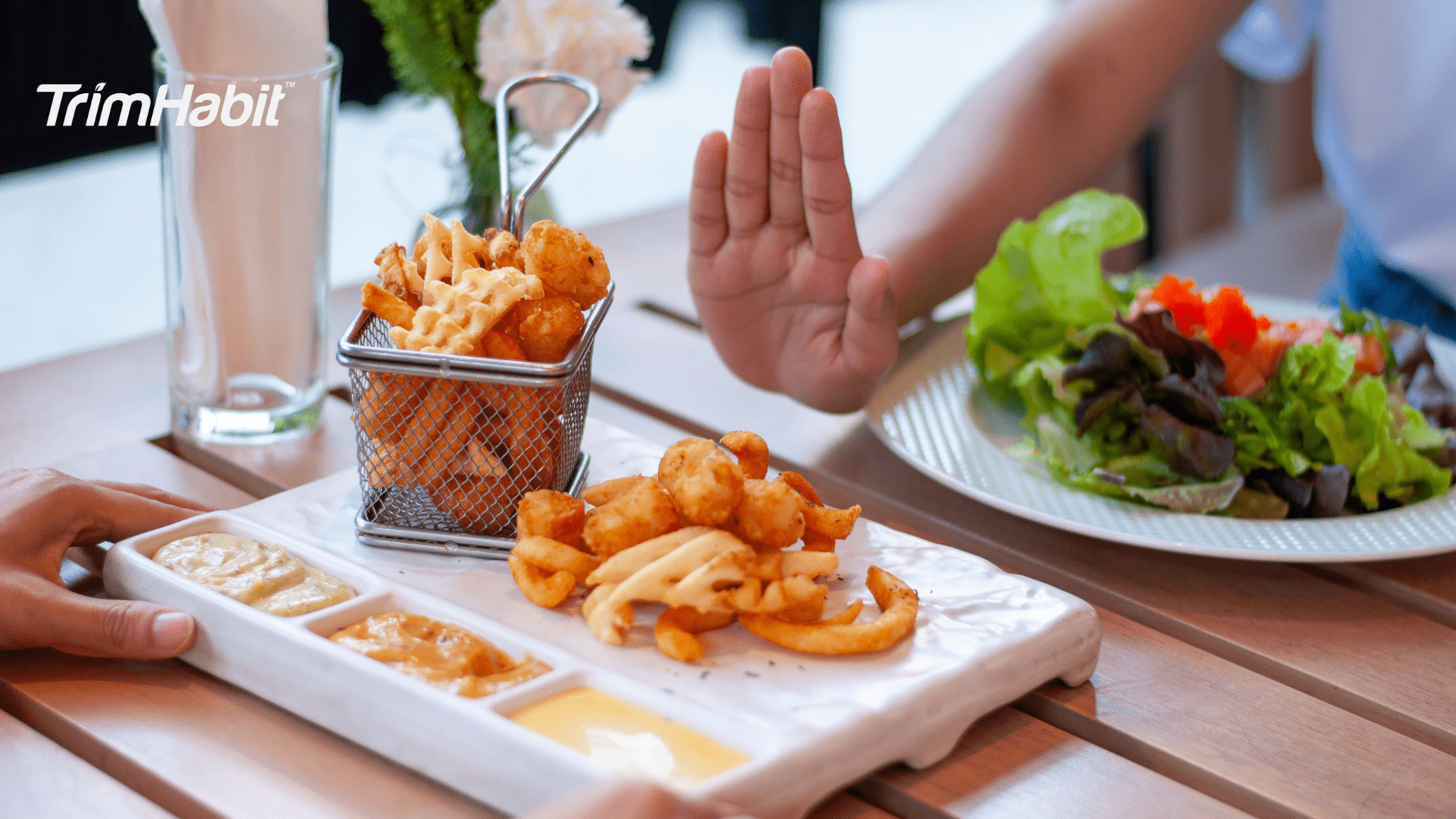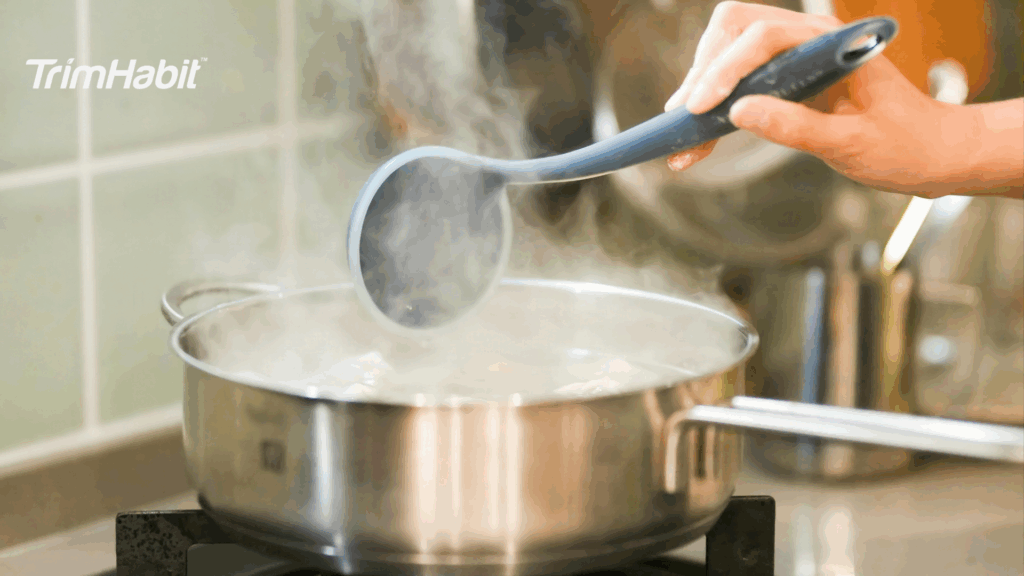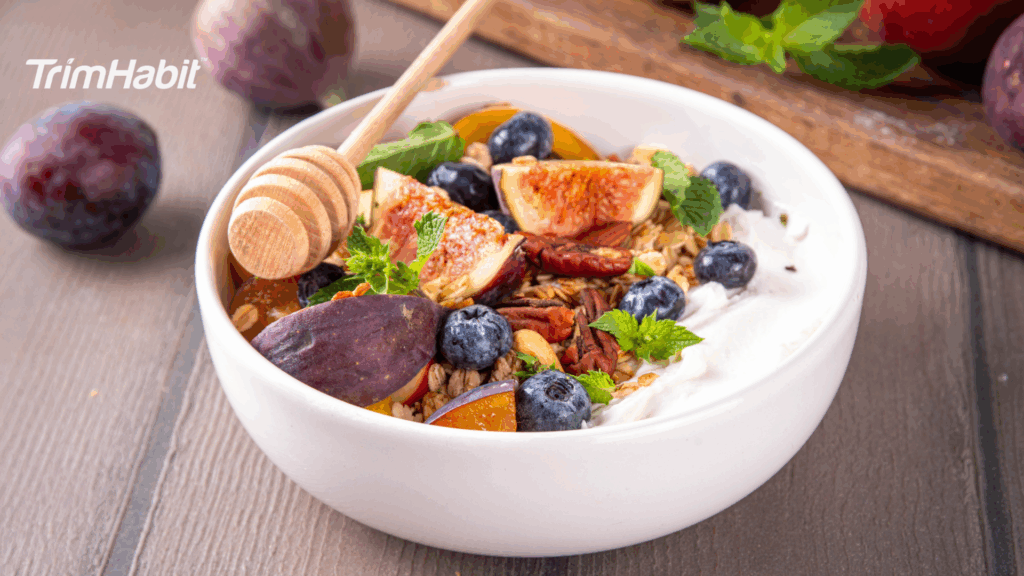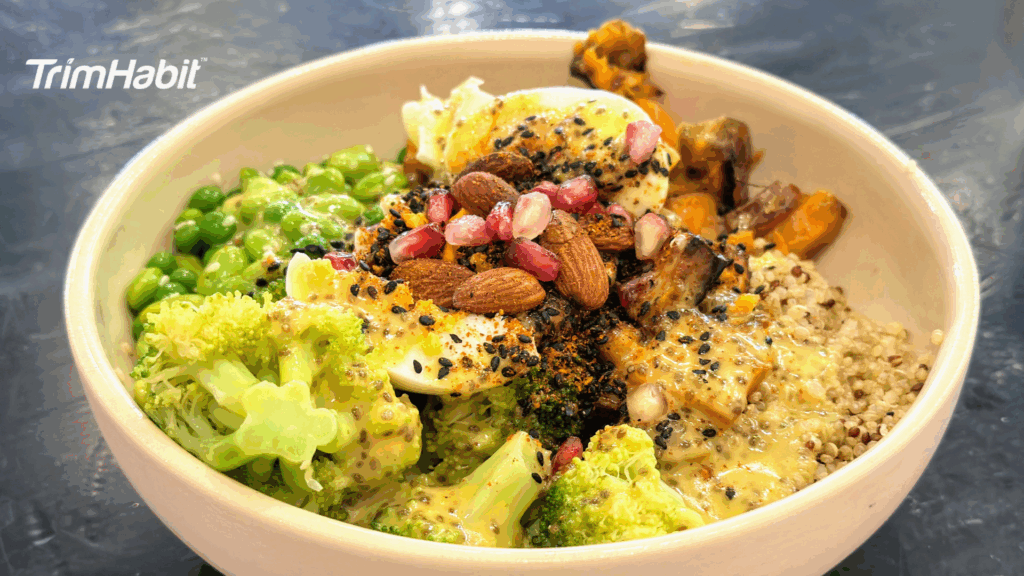Eating while on semaglutide doesn’t mean giving up control, even when you’re away from your own kitchen. With a little awareness and a few simple strategies, you can enjoy meals outside of your home that still support how your body feels and what it needs.
In this guide, we’ll walk you through how to build a semaglutide-friendly plate at restaurants, so you can feel confident ordering meals that support your body and your journey.
Semaglutide Overview
Semaglutide is a medication originally developed to manage type 2 diabetes and now widely used for weight loss and appetite control. It mimics a natural hormone called GLP-1 (glucagon-like peptide-1), which helps regulate blood sugar, slow digestion, and reduce hunger1.
Key Effects of Semaglutide
- Appetite Suppression: Makes you feel full faster and for longer.
- Slower Gastric Emptying: Food stays in your stomach longer, enhancing satiety.
- Improved Blood Sugar Control: Helps reduce blood glucose spikes after meals.
- Weight Loss Support: By reducing cravings and portion sizes.
Why Eating Strategically Matters
Because semaglutide changes how your body responds to food, it’s essential to:
- Eat nutrient-dense, balanced meals.
- Avoid overly greasy, sugary, or large meals that may cause nausea or discomfort.
- Focus on quality over quantity, especially when dining out.
Benefits Of A Balanced Diet
A balanced diet is the foundation of effective weight management, especially when using semaglutide. A well-rounded diet helps regulate blood sugar, control appetite, and support overall health by providing essential nutrients. Prioritizing various food groups, such as lean proteins, whole grains, non-starchy vegetables, and healthy fats, ensures you’re fueling your body for success.
Foods rich in fiber, like leafy greens, beans, and other non-starchy vegetables, promote digestive health and help you feel full longer, making it easier to avoid overeating. Incorporating lean protein sources, such as grilled chicken or fish, supports muscle mass and keeps you satisfied between meals. Healthy fats from sources like olive oil, avocado, and nuts add flavor and essential nutrients without the extra calories in fried foods or processed snacks.
In focusing on nutrient-dense foods and limiting fried foods and highly processed options, you can create a balanced diet that works harmoniously with semaglutide. This approach supports your weight loss journey and contributes to effective weight management, better blood sugar control, and improved overall health.
How To Build A Semaglutide-Friendly Plate At Restaurants
Step 1: Know Before You Go
Dining out on semaglutide is much easier when you plan. A little preparation can go a long way in helping you avoid temptation and stick to choices that support your goals.
You can research the menu online in advance.
Most restaurants now post their full menu, and even nutrition info, on their websites. Take advantage of this by scanning the options before you arrive. Look for meals that feature lean protein, veggies, and healthy fats. Planning your order helps you feel confident and avoid last-minute decisions that may not align with your needs.
You can call ahead for special accommodations.
If you’re unsure about the menu, you can call ahead to ask about substitutions or dietary accommodations. Many restaurants are happy to adjust meals if you let them know in advance. For example, you might ask for grilled protein instead of fried, a side salad instead of fries, or sauce served separately.
Choose restaurants with flexible, build-your-own options.
Places like Mediterranean cafés, poke bowl spots, or grill houses often let you customize your plate. These eateries are ideal for those on semaglutide because they make it easy to control ingredients, portion sizes, and preparation methods. The Mediterranean diet, particularly, is well-known for its health benefits, supporting weight management and healthy blood markers, and aligns well with semaglutide-friendly eating.
Step 2: Prioritize Protein and Fiber
When eating out on semaglutide, your two nutritional best friends are protein and fiber. Together, they help keep you full longer, support stable blood sugar, and slow digestion, which pairs perfectly with how semaglutide works to reduce appetite and improve satiety.
Protein supports muscle maintenance and helps prevent energy crashes, while fiber keeps your digestive system moving and contributes to that “satisfied” feeling after a meal. High fiber foods are especially beneficial for promoting satiety and supporting digestive health. Choosing protein-rich foods also helps support muscle maintenance and appetite control. This combination is especially helpful when your appetite is suppressed, as it ensures you get quality nutrition without overeating.
Look for these semaglutide-friendly menu choices:
- Grilled chicken (a top protein choice for dining out)
- Baked fish (a lean protein option often paired with vegetables)
- Grilled or baked turkey
- Eggs or egg-based dishes (like omelets or poached eggs)
- Plant-based proteins such as tofu, tempeh, or lentils
- Leafy greens (spinach, kale, romaine)
- Roasted or steamed non-starchy vegetables like broccoli, cauliflower, zucchini, and bell peppers
- Beans, chickpeas, and other legumes
How to spot these on the menu: Scan the “Entrées,” “Salads,” or “Sides” sections for descriptions like grilled, roasted, baked, or steamed. Avoid items labeled crispy, breaded, or smothered, as these are often higher in fat and refined carbs. When in doubt, ask your server how a dish is prepared or if substitutions are available.
Step 3: Portion Control – Watch Your Portions
One of the most noticeable effects of semaglutide is a reduced appetite, and that’s a good thing. But restaurant portions can still be massive, often two to three times what your body needs. Being mindful of this can help you avoid discomfort and stay on track.
If available, ask for a half portion or split a meal with a friend. Another great tactic is to ask for a to-go box when your food arrives, and immediately pack up the extra. This way, it is out of sight, out of mind.
You can also choose small plates or appetizers as your main dish. Many of these options still offer great nutritional value without the overload. The goal is to honor your hunger cues, not the portion size on the plate.
Step 4: Be Smart About Carbs and Healthy Fats
While carbs and fats aren’t the enemy, choosing the right kinds is essential, especially on semaglutide, which alters how your body digests food.
Go for complex carbs like brown rice, quinoa, oats, or sweet potatoes. These digest more slowly and help keep your blood sugar steady.
Limit refined carbs such as white bread, fries, pastries, and creamy pasta dishes. These can cause energy spikes and crashes and don’t provide lasting fullness.
When it comes to fats, choose healthy sources such as olive oil, avocado, nuts, or seeds, but keep portions in check. These fats are nutrient-rich but calorie-dense, so a little goes a long way.
Step 5: Mindful Eating Matters
When you’re on semaglutide, your body gives you subtle signs when it’s full, and tuning into those signals is key.
Eat slowly and chew thoroughly. This gives your body time to register satisfaction. Put your fork down between bites, take sips of water, and savor your meal.
Resist the urge to overeat just because “you paid for it.” Your health and comfort are worth more than finishing every bite.
Stay present and engaged in the conversation if you’re dining with others. Slowing down helps you recognize when you’re satisfied and prevents accidental overeating.
Step 6: Smart Beverage Choices
What you drink can be just as important as what you eat. Many restaurant beverages are loaded with sugar and empty calories that can work against your goals.
Skip sugary sodas, lemonades, and high-calorie cocktails. These drinks don’t offer any satiety and may even increase your hunger later.
Instead, opt for sparkling water, herbal teas, or low-calorie mocktails. For flavor without sugar, add a slice of lemon, cucumber, or mint.
If you choose to drink alcohol, keep in mind that it can slow digestion, increase hunger, and make it harder to stick to your eating choices. A single glass of wine or a light cocktail is usually enough if you want to indulge.
Summary
Eating at restaurants while taking semaglutide can bring new challenges. Your hunger cues might feel different, and it can be hard to know what will sit well or satisfy you without going overboard. It’s normal to feel unsure about what to order or how much to eat. But with a little planning, you can still enjoy meals outside of your home without losing your rhythm.
Start by looking for a source of protein, since that can help you feel fuller and more balanced. Add some fiber, like vegetables or beans, to support digestion. You can also ask for adjustments that make the meal work better for your needs. Many restaurants are happy to swap sides, put sauces on the side, or prepare items in a lighter way if you ask politely.
You do not have to finish everything on your plate, and you do not need to skip certain foods either. Just pay attention to what feels good in your body. Some days will feel easier than others, and that is okay. The more you practice ordering with intention, the more natural it becomes. Eating out can still fit into your routine with a few small shifts that support how you feel.









